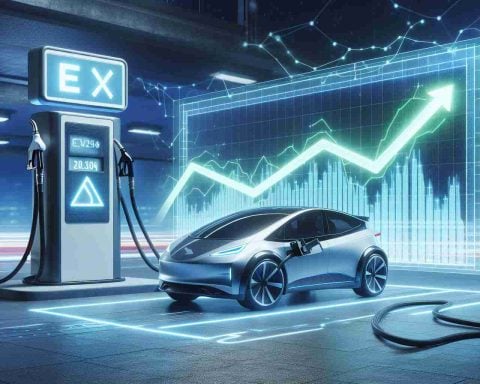China is gearing up for stricter regulations on the export of advanced technologies, as indicated by a recent announcement from the Ministry of Commerce. The ministry has initiated a public consultation process regarding these new export controls.
In a significant move, the annual export control catalog was released, coinciding with the ministry designating several U.S. defense contractors for export bans. The forthcoming restrictions focus on technologies essential for the production of electric vehicle (EV) battery components and the processing of vital minerals, including lithium and gallium.
Particularly affected are technologies used to manufacture batteries with lithium iron phosphate (LFP) and phosphate-based cathode materials. These cathode materials are pivotal to the efficiency and performance of lithium-ion batteries, which are widely utilized in the electric vehicle industry.
The LFP batteries, utilizing lithium iron phosphate as a cathode material, are recognized throughout China for their advantages, such as cost efficiency, enhanced safety, prolonged lifespan, and superior thermal and chemical stability. With these new restrictions, China is solidifying its position in the global EV market and influencing the flow of technologies that are critical for future advancements.
These developments are set to have profound consequences for manufacturers and technology developers globally, as they navigate a landscape increasingly affected by international trade tensions. The implications for the EV sector could be significant, reshaping industry dynamics and supply chains.
China Tightens Technological Export Regulations: What It Means for the Global EV Market
## Understanding China’s New Export Controls
In a pivotal shift, China’s Ministry of Commerce has announced stricter export regulations targeting advanced technologies critical to the electric vehicle (EV) industry. This move includes a public consultation regarding new export controls and the release of an updated export control catalog, which designates several U.S. defense contractors for bans on technology exports.
## Key Technologies Affected
The newly proposed restrictions primarily focus on technologies fundamental to the production of EV battery components, alongside the processing of essential minerals like lithium and gallium. These minerals are indispensable in the manufacturing of lithium-ion batteries, which power a majority of the electric vehicles on today’s roads.
Impact on Battery Manufacturing
Particularly concerning are the technologies related to the production of lithium iron phosphate (LFP) batteries. These batteries utilize LFP as a cathode material, which is noted for its:
– Cost Efficiency: LFP batteries tend to be cheaper to produce compared to other lithium-ion battery types.
– Enhanced Safety: They are less prone to overheating and thermal runaway, making them a safer option for EV manufacturers.
– Longevity: With a longer lifecycle, LFP batteries provide better value to consumers and manufacturers alike.
– Stability: Their superior thermal and chemical stability ensures reliable performance under various conditions.
## Consequences for Global Manufacturers
The implications of these restrictive measures are substantial and multifaceted. Manufacturers and technology developers worldwide will need to adapt to a rapidly evolving landscape, marked by increased international trade tensions. Here are some potential consequences:
Pros and Cons
– Pros:
– Strengthening of China’s domestic technology development.
– Promotion of innovations in battery technologies within China.
– Cons:
– Increased costs for global manufacturers reliant on Chinese technology.
– Potential delays in EV production due to technology sourcing challenges.
– Diversification of supply chains may become a necessity, impacting global market dynamics.
## Market Trends and Predictions
As these regulations take effect, several trends are likely to emerge:
1. Shift in Supply Chains: Companies may look for alternative suppliers outside China as they seek to mitigate risks associated with potential technology restrictions.
2. Increased Investment in Domestic Technologies: Other countries, especially those heavily invested in EV production, might escalate their R&D efforts to develop indigenous technologies and reduce reliance on Chinese exports.
3. Price Fluctuations: With potential limitations on access to critical materials and technologies, prices for EV components might experience volatility.
## Innovations on the Horizon
The push for advanced battery technologies is also set to continue, as manufacturers look to innovate beyond LFP batteries. Developments in solid-state batteries and other advanced chemistries could emerge as viable alternatives that do not rely as heavily on the materials restricted by these regulations.
## Security Considerations
From a security perspective, these export controls reflect growing concerns over technology and national security. Countries worldwide need to carefully assess their tech reliance on nations with existing tensions, highlighting the need for more rigorous security measures and protocols in technology transfer processes.
## Conclusion
China’s stringent new regulations on technology exports, particularly concerning the EV sector, are poised to reshape the industry landscape. As manufacturers and technology developers globally adjust to these changes, a new era of innovation and adaptation is set to unfold. The far-reaching impacts on supply chains, pricing, and international relationships will be critical for stakeholders to monitor in the coming years as the global market continues to evolve.
For more insights into global trade dynamics and technology regulations, visit China.org.cn.











